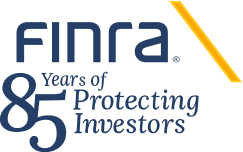Please don't limit investment options for investors. While some may not understand how complex products work, those of us who do find these particularly beneficial at times. For example, since the beginning of 2022 both equity and bond markets have stumbled while interest rates have increased. Because of inverse treasury funds like TBX and TBF, interest rate tracking funds like PFIX, and
Summary
Recently, FINRA took enforcement action against several firms for failing to establish or maintain a reasonably designed supervisory system for recommendations of alternative mutual funds, also sometimes referred to as “alt funds” or “liquid alts” (“Alt Funds”). FINRA is continuing to note such deficiencies in its examinations and communications reviews of such products.
This Notice
SUGGESTED ROUTING*
Senior ManagementLegal & ComplianceOperationsSystemsTrading
*These are suggested departments only. Others may be appropriate for your firm.
EXECUTIVE SUMMARY
On October 26, 1990, the Securities and Exchange Commission (SEC) approved the risk management functions of the Automated Confirmation Transaction (ACT) service. ACT risk management began operating Monday,
This page is intended to serve as an at-a-glance resource to help broker-dealer firm users track the development of CRD program-related functionality in FINRA Gateway. Retirement dates for Classic CRD features will also be noted on this page as they are announced. Check back for updates and announcements throughout the transition from Classic CRD to FINRA Gateway.
On This Page
Timeline
Effective Date: February 1, 1994
SUGGESTED ROUTING
Senior ManagementCorporate FinanceInstitutionalLegal & ComplianceSyndicate
Executive Summary
On November 10, 1993, the Securities and Exchange Commission (SEC) approved an amendment to Subsection (b)(7)(C) to Article III, Section 44 of the Rules of Fair Practice clarifying that the exemptions from the filing requirements of
"Synthetic Short Positions: In addition, FINRA is considering requiring firms to reflect synthetic short positions in short interest reports. For example, enhanced short interest reporting could include synthetic short positions achieved through the sale of a call option and purchase of a put option (where the options have the same strike price and expiration month) or through other
Executive Summary
FINRA recently held annual elections to fill vacancies on the Small Firm Advisory Committee (SFAC) and the Regional Committees.1 Additionally, at its December meeting, the FINRA Board of Governors (FINRA Board) also appointed several individuals to fill additional vacancies on the SFAC and the National Adjudicatory Council (NAC). This Notice lists the individuals recently
(a) Filing Requirements
Each member that sells a security in a non-public offering in reliance on an available exemption from registration under the Securities Act ("private placement") must: (i) submit to FINRA, or have submitted on its behalf by a designated member, a copy of any private placement memorandum, term sheet or other offering document, including any materially amended
Zero transparency. Inaccurately reporting from short. Naked shorts and complacent rule makers. Unfair dark pool usage. Abusive shorting and dark pool manipulation. Naked calls and married puts. HIDING FTDs in ITM options. Labelling shorts as long. Distraction plays and spoofing/layering by ALL hedgefunds, money makers. Algorthmic and high frequency trading. The short interest is self reported and
Short sellers need to be regulated and held to same standards as retail investors. Short positions time held and when returned/covered/closed should be reported publicly daily. Synthetic share shorts and naked shorting needs to be eliminated. Accountability for FTDs including who is failing to deliver and when fixed. Stop allowing shorting through ETFs.
